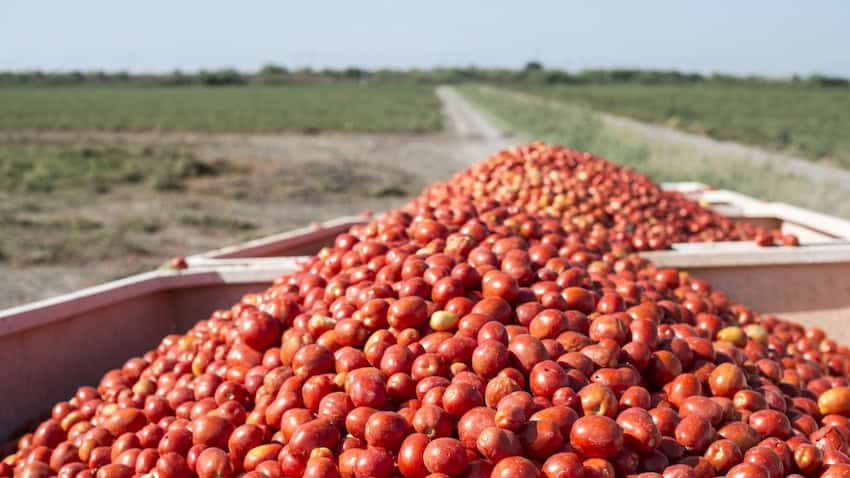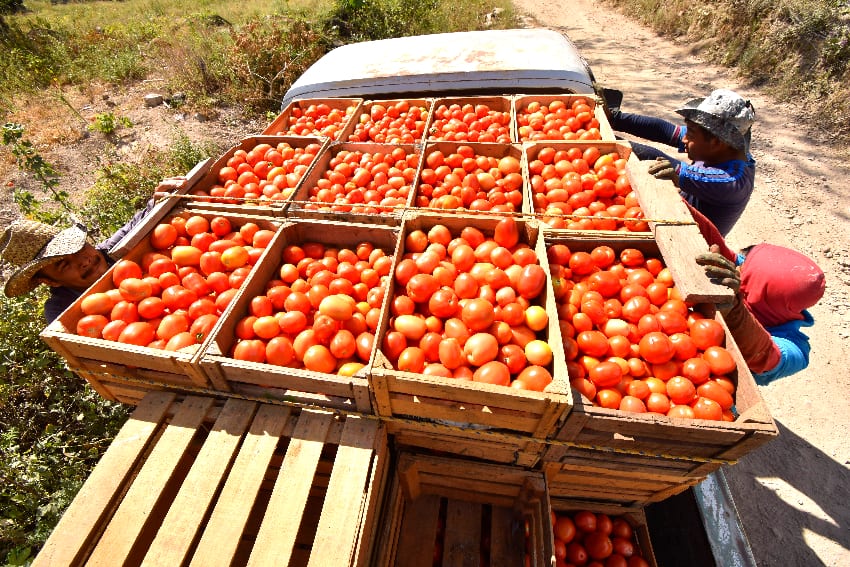As the imported Mexican Tomato comes to the US to launch in mid -July, Mexico’s farmers are actively propagating that they are harmful to both countries, joining the forces with American partners and the administration of President Gladia Shinbam
A farmer admitted that it was an uphill fight.
A group representing 120 tomato farmers in Baja California and Baja California Sur said, “Baja California Agricultural Council president Valbardo Solorio said,” It is very difficult to negotiate with someone who is not interested in the negotiations. “We are not going to knock on the door.
Solorio was also in the Mexican Tomato Exporters Group of Mexican Agricultural Minister Julio last week at Washington DC Bertegu, With US buyers, distributors and retailers who oppose US import fee. Perthug Forced Congress members, US Agricultural Secretary Brook met Rollins and said the exchange “very good and produce”, but not providing exclusive.
Mexican tomato farmers begin on July 14, 17.09% of the US border faces “anti -dumping” duties, with the US trade industry announced last month that it will withdraw from the tomato suspension agreement. There is a contract with Mexican farmers Exempt Since Mexican’s new tomatoes have been taxed on the US border since 1996, farmers have agreed to quality studies and prices rules.
These stocks are high for Mexican farmers, as more than half of the country’s tomato crop are exported to the US, the Economic Ministry said. It is worth more than $ 3 billion. Mexico’s tomato exports have increased sharply in recent years with the expansion of Mexico’s greenhouse production – today, the country is offering the country to seven of the 10 new tomatoes consumed in the United States.
After returning to California, he said in an interview, “We have all the alternatives, diplomatic, economic, political, politics, politics.” His family -owned Kuladanam farms, located south of the Pacific port city of Ennsenada, are specialized in various tomatoes, including cherry, baby clan and flag ripening.

Mexican President Claudia Shinepam has said that his government can retaliate to US duties on Mexican tomato By imposing duties In importing poultry and pork feet from the United States.
The controversy over Mexican tomato imports has been for many years, accusing Mexican farmers of using low labor costs and selling below US market prices, led by a group of Florida -based farmers, Florida Tomato Exchange, which is called “dumping”.
In the announcement of withdrawal from the suspension agreement, the US Trade Department said, “This action will allow tomato breeders to compete in the market fairly.”
According to a report by the Associated Press, California and Florida are the largest tomato farmers in the United States, but California’s tomatoes are mainly for processed tomato foods such as sauce. Florida is the main competitor of Mexico to produce fresh tomatoes.
From the announcement, companies on both sides of the border have spoken out against the duty, claiming that they are playing with the rules fixed by the tomato suspension agreement. Many farmers in Mexico are closely linked to American companies that provide plants and technical support and buy tomatoes.
Opponents of import tariffs on both sides of the border say it will lead to higher prices for US consumers and give them less choices. They say that this action threatens work on both sides of the border. Texas A and M The University said that approximately 47,000 full and part -time and US jobs are supported by the export of Mexican tomato.
Solorio said, “They do not have technology, water, climate, employees; they have many disadvantages, but they are missing it.”
According to a report by the Horticulture Industry Media Sales Center HarddaylileFlorida’s tomato industry has declined by implementing the North American Free Trade Agreement (NAFT) since the 1990s. Harditile has reported that in the 1990s of the state’s tomato breeder in 1990, the Harditile news has reported that it has fallen up to 9,000 acres, as Mexican farmers responded to great investment in greenhouse technology at the time, which allows special tomatoes to grow, whereas Florida’s industry traditionally raised rooms.
Solorio said the new tax would force retail prices because “it is practically impossible for the manufacturer to get so much percentage.”
Solorio said Baja California and Baja California Sur said that Solorio said it was about 11% of national production, with peasant clusters in San Quinton, Viscaino and La Bass communities.

In Baja California, 80% of the tomato crop is exported, the State Agriculture Ministry said. Most of that exports are sent to California, from there to other parts of the United States.
Baja California’s largest tomato production is a rural community, 150 miles from the California border. The region has been the export agriculture zone for decades. Import fees are a huge blow – not only for farmers, but for the entire economy of the region, which has fought by many factors, including government regulations and water shortages.
The isolation of the Peninsula from the mainland makes its farmers, especially affecting its farmers, because of the distance and shipping costs “the national market is not a choice”. Farmers may disappear or “they are forced to go to a different product, it requires time, investment and learning curve,” Solorio said.
The Sandra Dipl is a San Diego -based frealance journalist.
(Tagstotranslate) Baja California (T) Mexican Agricultural Exports (T) Tomatoes (T) Trump Tariffs Tomatoes (T) US mexico tomato tariff
Story Credit








